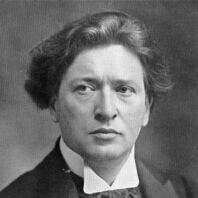费鲁奇奥·布索尼
作曲
Ferruccio Busoni was a highly educated and versatile artist of Italian-German descent. He was one of the outstanding European musical greats of the early 20th century. Among his contemporaries, he was far better known as Busoni the great piano virtuoso – one of the most significant after Franz Liszt – than as Busoni the composer, even though he wrote over 300 works.
Ferruccio Busoni was born in 1866 as the son of a pianist and a clarinettist near Empoli outside Florence. He grew up in the then Austrian city of Trieste and received his first lessons from his parents: “I owe my father an enormous debt of gratitude for encouraging me to study Bach during my childhood; and that at a time and in a country where the master was not considered much more than the likes of Carl Czerny.” Busoni gave public concerts from the age of eight – including in Vienna, where he first caused a sensation in the spring of 1876. He studied composition, counterpoint and harmony under Wilhelm Mayer. Even before his 15th birthday, he had composed more than 180 works in a wide variety of genres. After extensive concert tours, Busoni was accepted to the Reale Accademia Filarmonica in Bologna, where he was awarded a diploma in piano. On the recommendation of Hugo Riemann, he was offered his first permanent position as a piano teacher at today’s Sibelius Academy in Helsinki in September 1888. Through Rubinstein, he then taught at the conservatory in Moscow before moving to the New England Conservatory in Boston on the recommendation of Theodore Steinway. Busoni then moved to New York to concentrate fully on his acclaimed virtuoso career. In the spring of 1894, he settled in Berlin, where he instigated the widely acclaimed concert series New and Rarely Performed Orchestral Works with the Berliner Philharmoniker between 1902 and 1909. He also taught a small selection of piano students. His highly acclaimed Sketch of A New Aesthetic of Music was published in 1907. In 1915, Busoni, who was opposed to the war, went to Zurich, only returning to Berlin in 1920. Here he taught a masterclass in composition at the Prussian Academy of Arts, which he continued until his death in 1924.